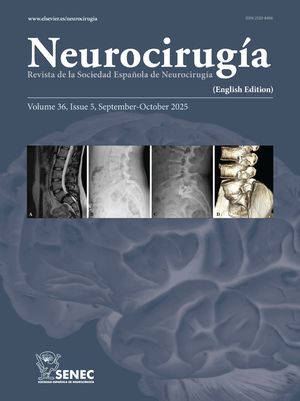La patología de carácter expansivo, tumoral o no, originada a nivel de la región anatómica de la base del cráneo (BC), presenta una gran diversidad histológica; desde un punto de vista clínico provoca una disfunción neurológica crónica de mayor o menor gravedad. El tratamiento quirúrgico representa la opción terapéutica más empleada. Un conocimiento exhaustivo de la anatomía topográfica de esta área es prioritario para un correcto diseño de la estrategia operatoria. En muchos casos se requiere una estrecha colaboración multidisciplinar. Como en cualquier actividad quirúrgica, la exéresis lesional completa y una correcta rehabilitación funcional y estética, en ausencia de complicaciones, es el reto del equipo quirúrgico.
El abordaje a la encrucijada anatómica que constituye la BC no es único, si no que se sustenta en un gran abanico de posibilidades; ninguna vía se puede considerar la mejor, ni ninguna está exenta de dificultad técnica, ni de posibles complicaciones.
Dentro del grupo de las vías transorales, la osteotomía maxilar tipo Le Fort I (OMLF I) segmentado, es aceptada por distintos autores como una excelente posibilidad de abordaje a la región del clivus y de la charnela occipito-vertebral.
Presentamos el caso de un paciente, tratado de forma conjunta con el Servicio de Neurocirugía de nuestro hospital. Fue diagnosticado clínica y radiológicamente de impresión basilar con compresión bulbar. El estudio de imagen mediante Resonancia Magnética (RM) ponía de manifiesto la presencia de un lesión fibrosa extradural localizada alrededor de la apófisis odontoides. En sesión clínica conjunta se decidió emplear un abordaje mediante OMLF I segmentado para abordar dicha lesión. La exposición del lecho quirúrgico fue óptima, obteniéndose una resección completa. Los resultados postoperatorios fueron altamente satisfactorios.
The expansive lesions, whether tumoral or not, originated at the level of the anatomical region of the skull base (SB), show a great histologic variety and clinicaly they cause a variable chronic neurological disfunction. Surgical treatment appears to be the best therapeutic option. An exhaustive knowledge of the topographic anatomy of this area is the mandatory in order to design an appropriate surgical strategy. In many cases, a narrow cooperation with specialists is necesary. As in any other surgical activity, a complete excision of the lesion and a optimal functional and aesthetic rehabilitation, without complications, is the challenge of the surgical team.
The approach to the anatomical area of the SB is not single, but is based on a number of procedures, although none of them could be considered the best, or without technical difficulty, or any complications. Within the group of transoral approaches, the Le Fort I-Palatal split (LFPS) technique has been considered by different authors an excellent way to approach the clivus and the occipito-vertebral joint.
We report the case of a patient, treated in cooperation with the Department of Neurosurgery of our hospital. He was clinical and radiologically diagnosed of basilar impresión with bulbar compression, and the MRI revealed the presence of a located extradural fibrous injury above the odontoid apophysis. Therefore we choose the use of a LFPS to approach this lesion. With an optimal surgical field, a complete excision of the lesion was obtained. The postoperatory result in the subsequent follow-up was highly satisfactory.
Article

If it is the first time you have accessed you can obtain your credentials by contacting Elsevier Spain in suscripciones@elsevier.com or by calling our Customer Service at902 88 87 40 if you are calling from Spain or at +34 932 418 800 (from 9 to 18h., GMT + 1) if you are calling outside of Spain.
If you already have your login data, please click here .
If you have forgotten your password you can you can recover it by clicking here and selecting the option ¿I have forgotten my password¿.






